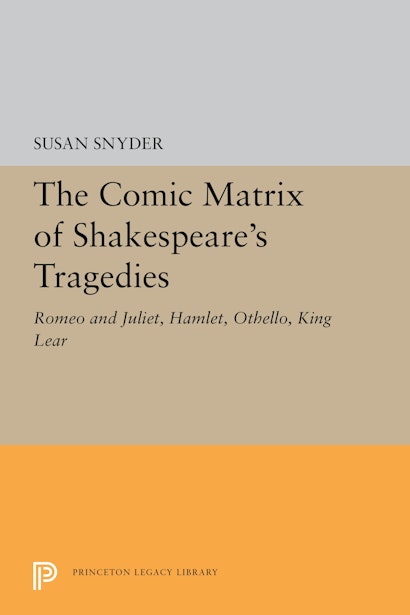The Comic Matrix of Shakespeare's Tragedies: Romeo and Juliet, Hamlet, Othello, and King Lear


Hardcover
- Price:
- $73.00/£60.00
- ISBN:
- Published:
- Jan 29, 2019
- Copyright:
- 1979
- Pages:
- 200
- Size:
- 6.14 x 9.21 in.
- Main_subject:
- Literature
Paperback
ebook
Comic elements in Shakespeare’s tragedies have often been noted, but while most critics have tended to concentrate on humorous interludes or on a single play, Susan Snyder seeks a more comprehensive understanding of how Shakespeare used the conventions, structures, and assumptions of comedy in his tragic writing. She argues that Shakespeare’s early mastery of romantic comedy deeply influenced his tragedies both in dramaturgy and in the expression and development of his tragic vision. From this perspective she sheds new light on Romeo and Juliet, Hamlet, Othello, and King Lear.
The author shows Shakespeare’s tragic vision evolving as he moves through three possibilities: comedy and tragedy functioning first as polar opposites, later as two sides of the same coin, and finally as two elements in a single compound.
In the four plays examined here, Professor Snyder finds that traditional comic structures and assumptions operate in several ways to shape the tragedy: they set up expectations which when proven false reinforce the movement into tragic inevitability; they underline tragic awareness by a pointed irrelevance; they establish a point of departure for tragedy when comedy’s happy assumptions reveal their paradoxical “shadow” side; and they become part of the tragedy itself when the comic elements threaten the tragic hero with insignificance and absurdity.
Susan Snyder is Professor of English at Swarthmore College.
Originally published in 1979.
The Princeton Legacy Library uses the latest print-on-demand technology to again make available previously out-of-print books from the distinguished backlist of Princeton University Press. These editions preserve the original texts of these important books while presenting them in durable paperback and hardcover editions. The goal of the Princeton Legacy Library is to vastly increase access to the rich scholarly heritage found in the thousands of books published by Princeton University Press since its founding in 1905.